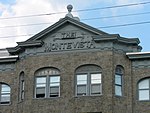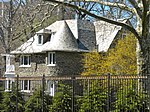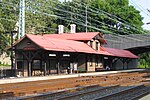63rd Street and Malvern Avenue station
Railway stations in PhiladelphiaRailway stations in the United States opened in 1926SEPTA Subway–Surface Trolley Line stations

63rd Street and Malvern Avenue station (also known as 63rd and Malvern Loop) is a SEPTA trolley station in Philadelphia. It is the western terminus of Route 10 of the SEPTA Subway–Surface Trolley Lines and northern terminus of SEPTA Bus Route 46. The station loop is located at 63rd Street and Malvern Avenue in the Overbrook neighborhood of West Philadelphia, near Lancaster Avenue. It is also close to the border with Lower Merion Township. Trolleys run from here to Center City Philadelphia. The Overbrook station of the Paoli/Thorndale Line is within walking distance of the station.
Excerpt from the Wikipedia article 63rd Street and Malvern Avenue station (License: CC BY-SA 3.0, Authors, Images).63rd Street and Malvern Avenue station
63rd & Malvern Loop, Philadelphia
Geographical coordinates (GPS) Address Nearby Places Show on map
Geographical coordinates (GPS)
| Latitude | Longitude |
|---|---|
| N 39.9839 ° | E -75.2462 ° |
Address
Malvern Avenue & 63rd Street (Malvern Loop)
63rd & Malvern Loop
19151 Philadelphia
Pennsylvania, United States
Open on Google Maps








